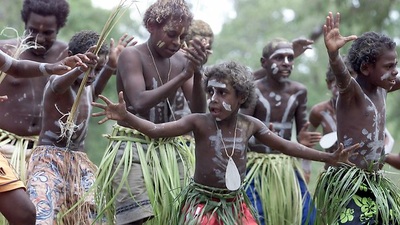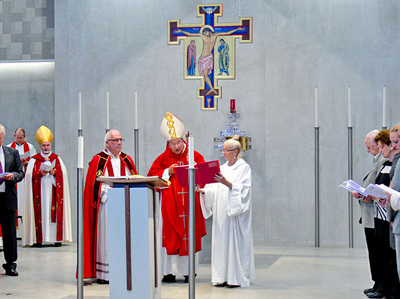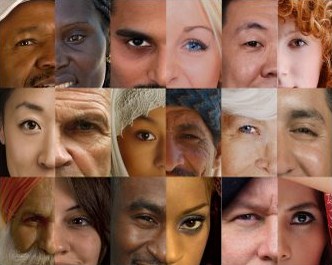Historical Perspectives
RELIGION IN THE AUSTRALIAN EXPERIENCE Maryanne Confoy (adapted and updated)
Identify the key words in the
three waves of religion in the Australian experience.
three waves of religion in the Australian experience.
If you ask people you know about religion in Australia, they will probably answer from their own experience. Religion has traditionally been associated with the 'church', and the church that is usually referred to is one of the Christian churches. Older people, in particular, have experienced religion in terms of the European Christian churches - faith is professed as a loyalty to the Roman Catholic Church, the Anglican Church, the Presbyterian Church or another of the Protestant denominations.
Younger peoples' experience of religion may not be in terms of their parents' Irish Catholic, or English Protestant experience. Today things have changed radically, and it is important for us to tune in to some of those changes.
One researcher who has written of religions in Australia speaks of 'Three Waves of Religion'. You may be in the middle of the third wave without even realising it!
The First Wave:
Aboriginal Religion
What was the first wave of religion in Australia? Around 45,000 years ago, hunters and food-gatherers were settling in the new land of the south, the land we now call Australia. These were the first Australians. Historians tell us that they developed a sophisticated way of life enabling them to adapt to and master the new geographical and climatic conditions and the resources offered by the environment.
In harmony with their nomadic way of living, these Aboriginal Australians developed a way of relating to and harmonising with the spirit world and their physical world. They had a conviction that there was a unity, a bond between all living beings and the living and eternal earth. Their religion found shape and form in the myths of their time. They embodied the stories of Dreamtime ancestors moving about on the landscape. Their myths, along with their art and rituals express their religion in terms of the Dreamtime or the Dreaming. This is the sacred, heroic time of long ago when people and nature came to be as they are. But it also determines what life is now and what it can be. The dreaming cannot be fixed in time; it is everywhere, it defines the Aboriginal experience and gives a profound emphasis to stability, to the sense of 'the timeless land'. This religious experience of the Aboriginal Australians pervaded the never-ending sameness of the vast continent for thousands of years. It remained the same until recently, around 200 years ago when a group of white, industrialised, scientific Christian believers came from a tiny island, 12,000 miles away. Their encounter with the life, ways and religion of these nomads produced 'the Second Wave'.
The second wave:
Protestant, Catholic, Jew
Captain Cook's charting of the great southland in 1770 had little impact in England until England lost her American colonies in 1776. Then there was a need for 'alternative' overseas settlements for those law breakers who had been sentenced to transportation. England's jails were overcrowded so the new colony provided a suitable solution. The First Fleet was despatched: 11 ships, 1030 people of whom 736 convicts. It is interesting to contrast beginnings of British settlements in America and in Australia.
The former were pilgrims, the latter were convicts! Australia began as a jail, not as a mission. The second wave of religion in Australia began in alienation and immorality. The religion that the new colonists brought with them had to find a new identity in a wilderness, a lonely and vast land. The imported religion was nurtured by a solitary Anglican Chaplain on the First Fleet. The convicts were predominantly Catholics, and the first priests arrived as convicts. There was no encouragement during the first 40 years for formal practice of the Catholic religion.
There were eight Jews on the First Fleet, 800 more were transported, but the first synagogue was not built until 1843. There was a little official concern or support for those who had a love for their religious heritage in these first 40 years.
The women and men who kept their faith alive in this period of the early settlement did so in the face of ridicule, scorn and persecution. Religion grew, but only under great difficulty and hardship. Eventually, by the mid nineteenth century things had begun to change and people were choosing to migrate to Australia. The penal colony identity faded into the background and the cultures of England, Ireland and Scotland began to make their presence felt in the new social developments. Visitors arriving in Australia in the nineteenth century felt that they were in an English culture and church. The religious experience of the people of the Second Wave was, after the early period of alienation and rejection, limited to the traditional religious experience of the Mother Country, and it remained so until the middle of the twentieth century.
The third wave: world religions and secularism
Since World War II, Australia has become a multicultural, multi-racial and multi-religious country. A new wave of people and religions has entered the land. Now there are 140 ethnic groups and 500 religious groups in Australia.
Immigration from the East and the West has played a significant role in the changing pattern of religious experience in this country. Since 1945 almost 4 million people have come form more than 100 countries of Europe, Asia and Oceania.
The religious experience of young Australians today is very different from that of their parents. Many older people would have grown up in an environment that knew only Protestants and Catholics. Now suburbs can have over 40 ethnic groups representing Muslim and Eastern European religious traditions. The previous assumption that people were growing up in a Christian world is now no longer true. This is one reason why education in world religions is a necessary part of any current religious education programme that hopes to enable today's children to understand their own religious environment.
The Present Experience:
Religious Pluralism In A Secular Environment
The earlier experience of white Australians being almost entirely Christian is true no longer. Think of your own experience. In your street how many people are of different ethnic origins? Are you aware of their church affiliations? Would the past pattern of Sunday church attendance be typical of the people you know?
Perhaps you are aware of the present state of Australian society. It is described as a secular state, that is, non-religious with increasing secularism. Those who write that they have no religion have increased to the extent that the 'non-religious' group is the fastest growing denomination. At the same time there is, among those who affirm a religious tradition, a great deal of pluralism and diversity of beliefs.
Most Australians who state that they belong to a church belong to the Western Christian Churches: Anglicans (17.1%), Catholics (25.3%), Uniting Church (5%), Lutherans (1.2%), Baptists (1.6%) and other groups have smaller representations. Eastern Orthodox Christians (2.6%) have moved into fourth place: Greek, Russian, Serbian and other Orthodox religious groups number half a million people.
Jews number 97,300 (0.5%), giving Australia the world's tenth largest Jewish population. But the Muslims of their various types have grown rapidly and now outnumber Jewish believers 476.300 (2.2%). We have Muslims from countries such as Turkey, Lebanon, Albania, India, Pakistan, Indonesia and Malaysia. There are many mosques and Islamic centres in Australia.
Buddhists from Asia in their many varieties are the largest of the non-Christian groups at 2.5% of the population. There are Hindus (1.3%) and many other variants of religions from Asia. These believers worship in communities, temples and meditation centres. There are several groups which follow gurus or spiritual leaders, non-Christian or Christian.
The Future: The New Dreamtime
Forty thousand years ago Stone Age nomads worshipped in unity with their land. Their experience of the Sacred was in terms of the Dreamtime. Two hundred years ago Australia became a little bit like England on the tip of Asia. Today, Australia is one of the world's most cosmopolitan societies. The varied ethnic and religious groups that characterise our society are developing alongside the national search for identity, community and purpose for living.
This diversity of experience poses many questions to Catholics struggling to find meaning in today's world. It is important to search out these questions. But we need to face the fact that a question that takes a moment to formulate may take a lifetime to understand.
What are some of your questions in regard to the Australian experience of religion? What are some of your hopes? What are some of your fears? What are some of the possible forms of religious searching for the sunburnt country? Is the diversity a challenge or a frustration for you as a person looking for some religious identity? If you had a choice, to which of the 'waves' of Australian religious experience would you belong? Why? Why do you reject other waves?
Younger peoples' experience of religion may not be in terms of their parents' Irish Catholic, or English Protestant experience. Today things have changed radically, and it is important for us to tune in to some of those changes.
One researcher who has written of religions in Australia speaks of 'Three Waves of Religion'. You may be in the middle of the third wave without even realising it!
The First Wave:
Aboriginal Religion
What was the first wave of religion in Australia? Around 45,000 years ago, hunters and food-gatherers were settling in the new land of the south, the land we now call Australia. These were the first Australians. Historians tell us that they developed a sophisticated way of life enabling them to adapt to and master the new geographical and climatic conditions and the resources offered by the environment.
In harmony with their nomadic way of living, these Aboriginal Australians developed a way of relating to and harmonising with the spirit world and their physical world. They had a conviction that there was a unity, a bond between all living beings and the living and eternal earth. Their religion found shape and form in the myths of their time. They embodied the stories of Dreamtime ancestors moving about on the landscape. Their myths, along with their art and rituals express their religion in terms of the Dreamtime or the Dreaming. This is the sacred, heroic time of long ago when people and nature came to be as they are. But it also determines what life is now and what it can be. The dreaming cannot be fixed in time; it is everywhere, it defines the Aboriginal experience and gives a profound emphasis to stability, to the sense of 'the timeless land'. This religious experience of the Aboriginal Australians pervaded the never-ending sameness of the vast continent for thousands of years. It remained the same until recently, around 200 years ago when a group of white, industrialised, scientific Christian believers came from a tiny island, 12,000 miles away. Their encounter with the life, ways and religion of these nomads produced 'the Second Wave'.
The second wave:
Protestant, Catholic, Jew
Captain Cook's charting of the great southland in 1770 had little impact in England until England lost her American colonies in 1776. Then there was a need for 'alternative' overseas settlements for those law breakers who had been sentenced to transportation. England's jails were overcrowded so the new colony provided a suitable solution. The First Fleet was despatched: 11 ships, 1030 people of whom 736 convicts. It is interesting to contrast beginnings of British settlements in America and in Australia.
The former were pilgrims, the latter were convicts! Australia began as a jail, not as a mission. The second wave of religion in Australia began in alienation and immorality. The religion that the new colonists brought with them had to find a new identity in a wilderness, a lonely and vast land. The imported religion was nurtured by a solitary Anglican Chaplain on the First Fleet. The convicts were predominantly Catholics, and the first priests arrived as convicts. There was no encouragement during the first 40 years for formal practice of the Catholic religion.
There were eight Jews on the First Fleet, 800 more were transported, but the first synagogue was not built until 1843. There was a little official concern or support for those who had a love for their religious heritage in these first 40 years.
The women and men who kept their faith alive in this period of the early settlement did so in the face of ridicule, scorn and persecution. Religion grew, but only under great difficulty and hardship. Eventually, by the mid nineteenth century things had begun to change and people were choosing to migrate to Australia. The penal colony identity faded into the background and the cultures of England, Ireland and Scotland began to make their presence felt in the new social developments. Visitors arriving in Australia in the nineteenth century felt that they were in an English culture and church. The religious experience of the people of the Second Wave was, after the early period of alienation and rejection, limited to the traditional religious experience of the Mother Country, and it remained so until the middle of the twentieth century.
The third wave: world religions and secularism
Since World War II, Australia has become a multicultural, multi-racial and multi-religious country. A new wave of people and religions has entered the land. Now there are 140 ethnic groups and 500 religious groups in Australia.
Immigration from the East and the West has played a significant role in the changing pattern of religious experience in this country. Since 1945 almost 4 million people have come form more than 100 countries of Europe, Asia and Oceania.
The religious experience of young Australians today is very different from that of their parents. Many older people would have grown up in an environment that knew only Protestants and Catholics. Now suburbs can have over 40 ethnic groups representing Muslim and Eastern European religious traditions. The previous assumption that people were growing up in a Christian world is now no longer true. This is one reason why education in world religions is a necessary part of any current religious education programme that hopes to enable today's children to understand their own religious environment.
The Present Experience:
Religious Pluralism In A Secular Environment
The earlier experience of white Australians being almost entirely Christian is true no longer. Think of your own experience. In your street how many people are of different ethnic origins? Are you aware of their church affiliations? Would the past pattern of Sunday church attendance be typical of the people you know?
Perhaps you are aware of the present state of Australian society. It is described as a secular state, that is, non-religious with increasing secularism. Those who write that they have no religion have increased to the extent that the 'non-religious' group is the fastest growing denomination. At the same time there is, among those who affirm a religious tradition, a great deal of pluralism and diversity of beliefs.
Most Australians who state that they belong to a church belong to the Western Christian Churches: Anglicans (17.1%), Catholics (25.3%), Uniting Church (5%), Lutherans (1.2%), Baptists (1.6%) and other groups have smaller representations. Eastern Orthodox Christians (2.6%) have moved into fourth place: Greek, Russian, Serbian and other Orthodox religious groups number half a million people.
Jews number 97,300 (0.5%), giving Australia the world's tenth largest Jewish population. But the Muslims of their various types have grown rapidly and now outnumber Jewish believers 476.300 (2.2%). We have Muslims from countries such as Turkey, Lebanon, Albania, India, Pakistan, Indonesia and Malaysia. There are many mosques and Islamic centres in Australia.
Buddhists from Asia in their many varieties are the largest of the non-Christian groups at 2.5% of the population. There are Hindus (1.3%) and many other variants of religions from Asia. These believers worship in communities, temples and meditation centres. There are several groups which follow gurus or spiritual leaders, non-Christian or Christian.
The Future: The New Dreamtime
Forty thousand years ago Stone Age nomads worshipped in unity with their land. Their experience of the Sacred was in terms of the Dreamtime. Two hundred years ago Australia became a little bit like England on the tip of Asia. Today, Australia is one of the world's most cosmopolitan societies. The varied ethnic and religious groups that characterise our society are developing alongside the national search for identity, community and purpose for living.
This diversity of experience poses many questions to Catholics struggling to find meaning in today's world. It is important to search out these questions. But we need to face the fact that a question that takes a moment to formulate may take a lifetime to understand.
What are some of your questions in regard to the Australian experience of religion? What are some of your hopes? What are some of your fears? What are some of the possible forms of religious searching for the sunburnt country? Is the diversity a challenge or a frustration for you as a person looking for some religious identity? If you had a choice, to which of the 'waves' of Australian religious experience would you belong? Why? Why do you reject other waves?
|
| ||||||||||||
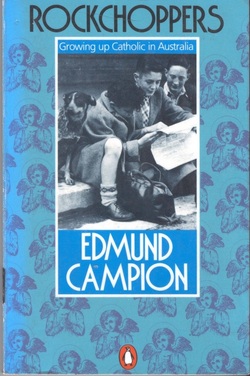
Chapter One: A People's Religion
Irish and rebel both,
And both unto the end
CHRISTOPHER BRENNAN
The history of the Catholic Church in Australia begins with the arrival of the First Fleet in January 1788. There were some 1,000 people on board, three-quarters of them convicts. The religion of the convicts is unknown, but some must have been Catholic. Certainly, by the time an accurate count was made, in 1828, Catholics numbered one-quarter of the colony's population. Despite their degraded condition, many of them were coming to a better life than they had left behind them. Later, observers noticed on the way out that Irish convicts seemed happier than any other group: whatever lay in front of them, they were leaving behind a life of pauperism, pinched bellies, and early death.
Irish and rebel both,
And both unto the end
CHRISTOPHER BRENNAN
The history of the Catholic Church in Australia begins with the arrival of the First Fleet in January 1788. There were some 1,000 people on board, three-quarters of them convicts. The religion of the convicts is unknown, but some must have been Catholic. Certainly, by the time an accurate count was made, in 1828, Catholics numbered one-quarter of the colony's population. Despite their degraded condition, many of them were coming to a better life than they had left behind them. Later, observers noticed on the way out that Irish convicts seemed happier than any other group: whatever lay in front of them, they were leaving behind a life of pauperism, pinched bellies, and early death.
On Sunday, 3 February, the First Fleet convicts were marched out to hear the Reverend Richard Johnson, an earnest evangelical, preach the first sermon in this new world. Pitching his makeshift pulpit under a big tree at what is now the meeting of Hunter, Bligh, and Castlereagh streets in Sydney, Mr Johnson took as his text a verse from the psalmist, `What shall I render unto the Lord for all his benefits toward me?' It sounds a slightly ironical text for a sermon preached to convicts and jailers, but they may have thought it appropriate. It was the only sermon they would be able to hear that day, for Mr Johnson was the only clergyman in the colony. Ten days later he was to listen while Governor Arthur Phillip took his oaths of office, including the declaration against transubstantiation: `I, Arthur Phillip, do declare that I do believe that there is not any Transubstantiation in the Sacrament of the Lord's Supper or in the Elements of Bread and Wine at or after the Consecration thereof by any Person whatsoever . . .' Johnson's sermon and Governor Phillip's oath stand on the first page of Australian religious history.
They are a reminder of the lowly condition of Australia's first Catholics. Their jailers would not allow them priests of their own persuasion because, in the opinion of such as the Reverend Samuel Marsden, this would make it ‘more than probable that the colony would be lost to the British Empire in less than one year’. It was not until 1803 that Mass was allowed to be celebrated publicly by a convict priest; a permission which was withdrawn the next year, following the Castle Hill rebellion. After that, it was barred for another sixteen years. Finally, the government decided to appoint papist priests as auxiliaries to the police. Their job was strictly defined: not to stir people up or make converts, but to keep the convicts in order. So the Catholic Church in Australia was identified right from the beginning with the outcasts of society, the convicts and the colonial proletariat. The concentration of Catholics at the lower levels of the social scale was reinforced by the decision of the government in 1836 to run an assisted immigration scheme by which people could get cheap passages to the colony. The scheme lasted until 1886 and brought out over 200,000 immigrants, nearly half of them Irish. As late as 1856, a survey showed that less than half the Catholics could read or write. Their church was truly a church of the poor.
In Irish history, the century that saw the foundation of Australia is known as the Bad Century, because it is the period of the Penal Laws. After the defeats of the Battle of the Boyne and Limerick, in 1690 and 1691, 12,000 natural leaders fled to the Continent in what is called the Flight of the Wild Geese. Those who remained behind were subjected to a systematic, detailed and all-inclusive persecution by the English overlords. Their lands were confiscated, and they were driven into the fields. Their civil rights were extinguished one by one between 1696 and 1746. They could not vote. They could not sit in Parliament. They could not enter the army. They could not possess a gun. They could not open a school. They could not belong to a religious order. They could not own a horse worth more than five pounds. Those years embittered Irishmen and Irishwomen. They are, for instance, part of the explanation why, a century ago, the Kelly gang were able to roam free for twenty months among their own people, although they had 8,000 pounds blood money on their heads. No one would betray them to the representatives of the ancient persecutors.
The Penal Laws of the eighteenth century not only pauperized and embittered the Irish, they robbed them of their natural leaders. One result of this was that, as in the Roman Empire of the fourth and fifth centuries, so also in Ireland, it was the clergy who filled the vacuum. Irish priests and bishops formed the habit of being spokespersons for their people; too often, there was nobody else. By destroying Celtic/Catholic society, with its intricate webs of authority, order, and leadership, the Penal Laws paradoxically gave power to the priests. Of equal significance is the way in which the Penal Laws effectively destroyed Irish native culture. What remains today of Gaelic civilization is stunningly beautiful. But its very paucity testifies to the success of the cultural genocide by the English conquerors. The effects of this survive to the present day. Deprived of politics, social life, and even a creative cultural life, the Irish turned to the Catholic religion as the sole focus of their national spirit. The fifth-century missionary, St Patrick, had said, `If you would be Christian, be Roman.' The Irish of the penal years might have rephrased that, `If you would be Irish, be Catholic.' The famine years in the 1840s accelerated this identification between being Irish and being Catholic. Preaching in 1872, the celebrated Dominican, Father Tom Burke, felt able to affirm:
Take an average Irishman - I don't care where you find him - and you will find that the very first principle in his mind is, `I am not an Englishman, because I am a Catholic!' Take an Irishman wherever he is found, all over the earth, and any casual observer will at once come to the conclusion, `Oh, he is an Irishman, he is a Catholic'. The two go together.
They are a reminder of the lowly condition of Australia's first Catholics. Their jailers would not allow them priests of their own persuasion because, in the opinion of such as the Reverend Samuel Marsden, this would make it ‘more than probable that the colony would be lost to the British Empire in less than one year’. It was not until 1803 that Mass was allowed to be celebrated publicly by a convict priest; a permission which was withdrawn the next year, following the Castle Hill rebellion. After that, it was barred for another sixteen years. Finally, the government decided to appoint papist priests as auxiliaries to the police. Their job was strictly defined: not to stir people up or make converts, but to keep the convicts in order. So the Catholic Church in Australia was identified right from the beginning with the outcasts of society, the convicts and the colonial proletariat. The concentration of Catholics at the lower levels of the social scale was reinforced by the decision of the government in 1836 to run an assisted immigration scheme by which people could get cheap passages to the colony. The scheme lasted until 1886 and brought out over 200,000 immigrants, nearly half of them Irish. As late as 1856, a survey showed that less than half the Catholics could read or write. Their church was truly a church of the poor.
In Irish history, the century that saw the foundation of Australia is known as the Bad Century, because it is the period of the Penal Laws. After the defeats of the Battle of the Boyne and Limerick, in 1690 and 1691, 12,000 natural leaders fled to the Continent in what is called the Flight of the Wild Geese. Those who remained behind were subjected to a systematic, detailed and all-inclusive persecution by the English overlords. Their lands were confiscated, and they were driven into the fields. Their civil rights were extinguished one by one between 1696 and 1746. They could not vote. They could not sit in Parliament. They could not enter the army. They could not possess a gun. They could not open a school. They could not belong to a religious order. They could not own a horse worth more than five pounds. Those years embittered Irishmen and Irishwomen. They are, for instance, part of the explanation why, a century ago, the Kelly gang were able to roam free for twenty months among their own people, although they had 8,000 pounds blood money on their heads. No one would betray them to the representatives of the ancient persecutors.
The Penal Laws of the eighteenth century not only pauperized and embittered the Irish, they robbed them of their natural leaders. One result of this was that, as in the Roman Empire of the fourth and fifth centuries, so also in Ireland, it was the clergy who filled the vacuum. Irish priests and bishops formed the habit of being spokespersons for their people; too often, there was nobody else. By destroying Celtic/Catholic society, with its intricate webs of authority, order, and leadership, the Penal Laws paradoxically gave power to the priests. Of equal significance is the way in which the Penal Laws effectively destroyed Irish native culture. What remains today of Gaelic civilization is stunningly beautiful. But its very paucity testifies to the success of the cultural genocide by the English conquerors. The effects of this survive to the present day. Deprived of politics, social life, and even a creative cultural life, the Irish turned to the Catholic religion as the sole focus of their national spirit. The fifth-century missionary, St Patrick, had said, `If you would be Christian, be Roman.' The Irish of the penal years might have rephrased that, `If you would be Irish, be Catholic.' The famine years in the 1840s accelerated this identification between being Irish and being Catholic. Preaching in 1872, the celebrated Dominican, Father Tom Burke, felt able to affirm:
Take an average Irishman - I don't care where you find him - and you will find that the very first principle in his mind is, `I am not an Englishman, because I am a Catholic!' Take an Irishman wherever he is found, all over the earth, and any casual observer will at once come to the conclusion, `Oh, he is an Irishman, he is a Catholic'. The two go together.
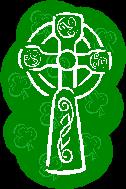
- What was the first formal prayer uttered at the penal settlement in NSW?
- How many people were there?
- Who was the leader of the prayer?
- The Catholic church of the mid 1800s was described as “… truly a church of the poor.” What evidence is offered to support this?
- Write out the quote that summarize the Irish associations with Catholicism and anti-English sentiment in 1870s
- Which wave of Australian religious experience does this article primarily refer to? Explain
